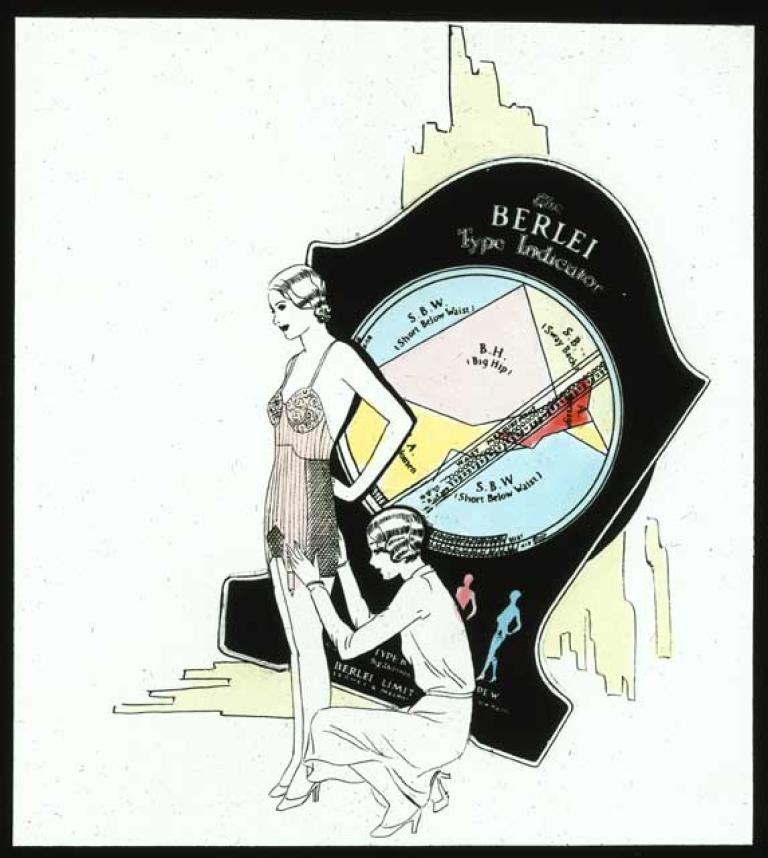
The Berlei type indicator
This illustration of the Berlei Type Indicator would have been used either as part of the Berlei training for prospective corsetieres, or as part of one of their women-only live shows or film screenings in the late 1930s and early 40s. It shows a corsetiere examining the fit of a foundation garment with the indicator appearing in the background.
In 1926 Berlei and physiologists from the University of Sydney did an anthropometric survey of 6000 Australian women (of European descent) in order to find different figure types. The types they created were Sway Back Type, Hip Type, Abdomen Type, Average Type and Short Below Waist Type. Having many women fit into these categories meant they could manufacture corsets ahead of time and simply supply the correct size for the customer's measurements.
This research led to the creation of the Berlei Type Indicator whose moving parts could isolate the correct type from a woman's measurements. Seeking to enhance the legitimacy of their design underpinnings, images like this and the language used have a scientific and medical flavour to them. It's interesting that all but one of the figure types were pejorative terms - highlighting the 'figure flaws' of the women. Creating insecurity about a particular feature of a woman's body was (and continues to be) a successful marketing tool.
Notes by Beth Taylor
The National Film and Sound Archive of Australia acknowledges Australia’s Aboriginal and Torres Strait Islander peoples as the Traditional Custodians of the land on which we work and live and gives respect to their Elders both past and present.



